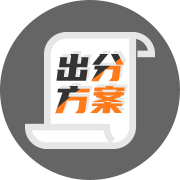

2015-03-19
栏目:考培资讯
找一篇真正的SAT世界历史备考大纲怎么就这么难呢!现在各位小伙伴不用发愁了,来自伦敦国王学院的姜馨蓉老师为SAT考生们整理了SAT 世界历史备考大纲(1450-1750),希望对大家备考有所帮助。
The big-picture concept with following questions
1. Why did Europe become a dominant power during this time period?
Was it because European nations vied for world dominance while other civilizations didn’t, or because of technological superiority? Was it for some other reason? Why did some of the European nation-states develop vast empires while other did not?
2. What were some of the differences among the ways in which non-European cultures interacted with Europe? What influenced contributed to these differences? What were the consequences? European powers penetrated different parts of the globe to different degrees.
3. How did the global economy change during this time period? What was the impact on the world’s civilizations? Notice how economical considerations drove much of the world’s interaction. Pay attention to how the larger global economy impacted the various regions of the globe.
4. What were the impacts of global interaction on the environment? Conversely, what were the impacts of the environment on human societies? What ideas, diseases, plants and animals travelled the globe along with human settlement? The need for new resources brought massive changes, but at the same time, the environment acted on human societies, sometimes with disastrous consequences. Pay attention to the effects of the 500 year period of global cooling that began around 1500 and resulted in shortage of crops, famines, and susceptibility to diseases.
Part One: Major European developments 1450-1750
Changes affected life on all levels: the way people viewed themselves (their past, their present, and their future potential), the way governments viewed their authority, they way religion intersected with politics and individuality, and they way European thought about interacted with the rest of the world.
By the end of these 300 years, the European countries will have used their new technologies, new ideas of governing, and new forms economical organization to become the dominant world powers. Much of their success was based on competition and rivalry as they raced to secure faster trade routes, new colonial possessions, and attempt to gain control of key resources. And much of their success came at the expense of the land-based empires of Asia and the declining empires in the Americas.
A. Revolutions in European Thought and Expression
1. The Renaissance: Classical Civilization
a. Humanism: focus on human endeavors
b. The Arts Stage a Comeback (famous artist and their masterpieces)
c. Western writers finally get readers
Johannes Gutenberg;
Printing Press;
Famous writers and their masterpieces: Machiavelli, Erasmus, Sir Thomas More, William Shakespeare;
2. The Protestant Reformation: Streamlining Salvation
a. Martin Luther: VS Pope Leo X, 95 thesis; Lutherans
b. Christianity Splits Again: Calvinism, Church of England
c. The Counter- Reformation: The Pope Reasserts His Authority: Catholic Reformation; Ignatius Loyola founded the society of Jesuits

3. The scientific revolution
a. The Copernican Revolution: On the Revolutions of the Heavenly Spheres; Galileo and his Dialogue Concerning the Two Chief Systems of the World
b. The scientific method: Tycho Brahe, Francis Bacon, Johannes Kepler, Sir Isaac Newton and his The Mathematical Principal of Natural Philosophy
c. Deism: God as a watchmaker
4. The Enlightenment
a. First a little background: Divine Right and Mandate of Heaven
b. The Social Contract: Power to the people: Thomas Hobbs and his Leviathan, John Locke and his Two treaties on Government, Jean-Jacques Rousseau and his The social Contract, Voltaire and Montesquieu
B. European Exploration and Expansion: Empires of the wind
Famous people: Prince Henry the Navigator, Vasco da Gama, Christopher Columbus, Ferdinand Magellan, John Cabot
Treaty of Tordesillas in 1494
1. Fine Products brought the Age of Revolution
a. The sternpost rudder
b. Lateen sails
c. The astrolabe
d. The magnetic compass
e. Three-masted Caravels
2. The new world: Aztec and Hernan Cortes
Inca and Francisco Pizarro
3. Disease: The Ultimate weapon of mass destruction
4. The Encomienda system: American feudalism
Peninsulares, crillos or creoles, mestizos, mulattos
5. The African Slave Trade: Middle Passage
6. The Columbian Exchange: animals, plants, disease, people, technology and ideas, silver and gold
7. The Commercial Revolution: joint-stock company, Muscovy Company, Dutch East India Company and Mercantilism
Part Two: Developments in specific countries and empires 1450-1750
A. The European Rivals
1. Spain and Portugal: King Ferdinand, Queen Isabella, Charles V, Philip, Spanish Inquisition
2. England: King Henry VIII, Act of Supremacy, Elizabeth I, Elizabethan Age, Muscovy Company, British East India Company, James I, Petition of Right, Long Parliament, Oliver Cromwell, English Commonwealth, Lord Protector, Stuart Restoration, Habeas Corpus Act, Glorious Revolution, English Bill of Rights
3. France: Huguenots, Henry IV, Edict of Nantes, Cardinal Mazarin, Jean Baptiste Colbert, Philip V
4. German Areas (Holy Roman Empire): Peace of Augsburg, Thirty Years’ War, Peace of Westphalia
B. Russia out of Isolation
Ivan III, Ivan IV, Ivan the terrible, Times of Troubles, Romanov, Peter the Great, Catherine the great
C. Islamic Gunpowder Empires: Ottoman, Safavid, and Mughal
Osman Bey, Selim I, Suleiman I, Akbar, Shah Jahan, Taj Mahal
D. Africa
Songhai, Kongo, Angola, King Alfonso, Queen Nzinga
E. Isolated Asia
1. China: Zheng He, Qing, Kangxi, Qianlong,
2. Japan: Tokugawa Ieyasu, Edo Perio, National Seclusion Policy, Kabuki
Part Three: Technology and innovations 1450-1750

 咨询时间:9:00-23:00
咨询时间:9:00-23:00 咨询时间:
咨询时间: